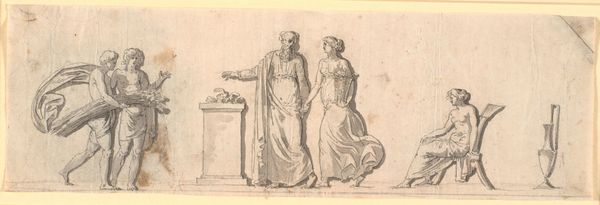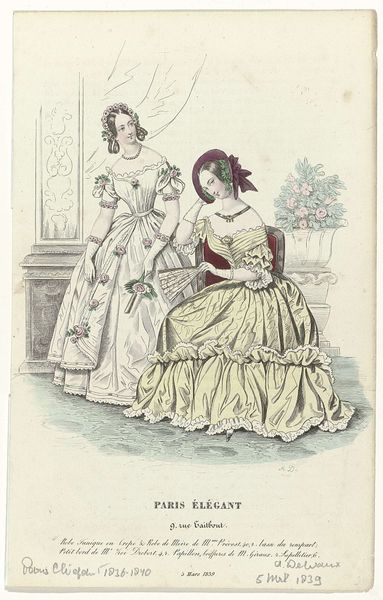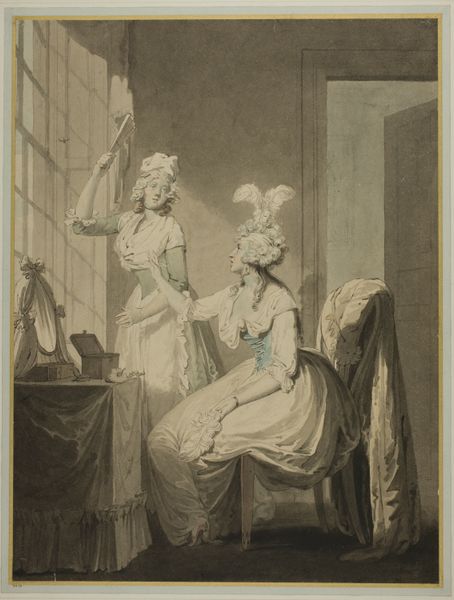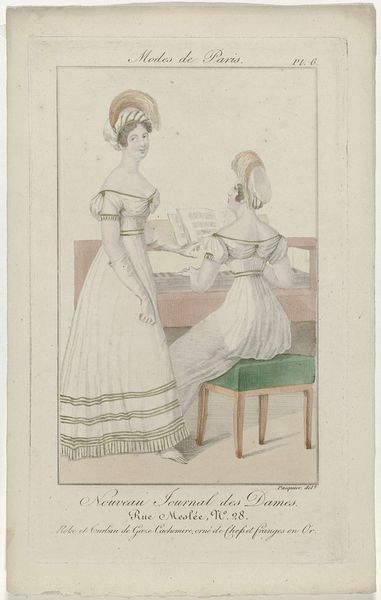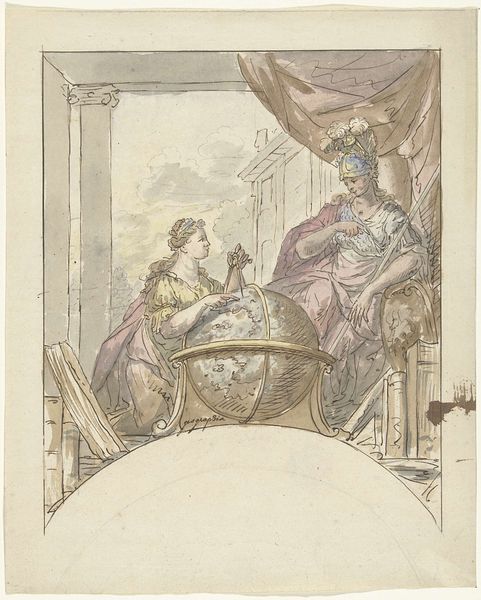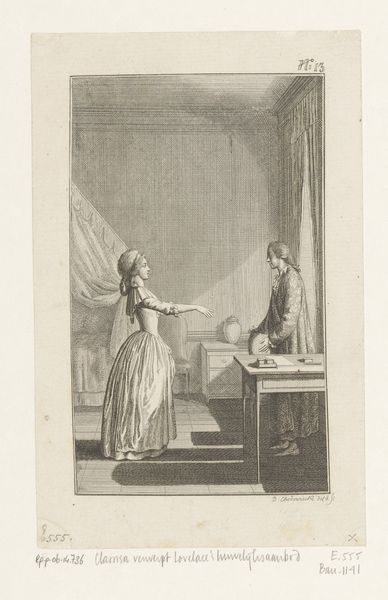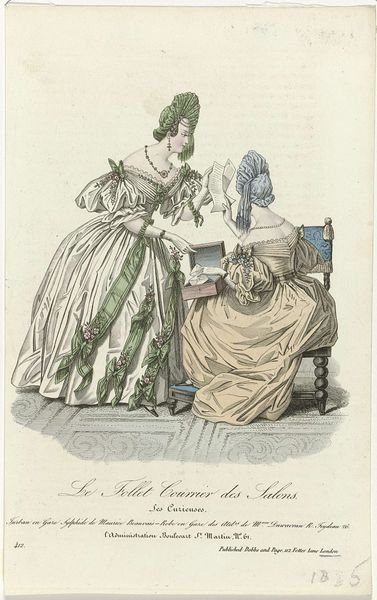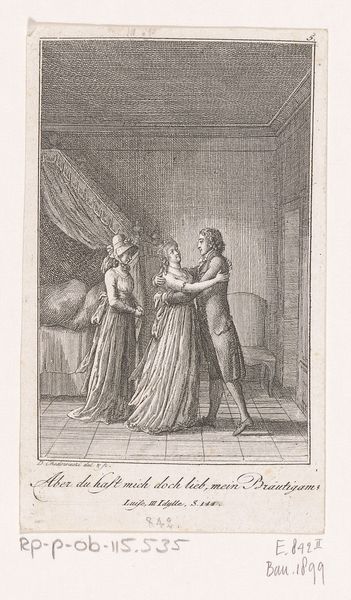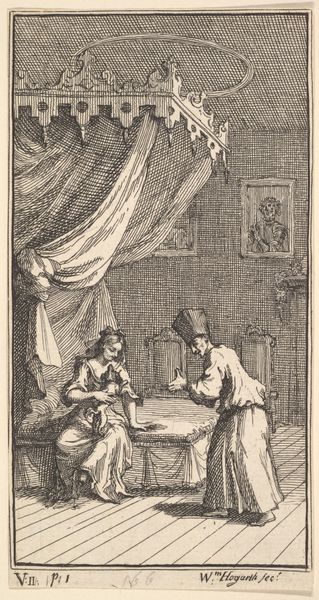
Design for a Book Illustration: Two Women Dancing around a Plant 1800 - 1900
0:00
0:00
drawing, print
#
portrait
#
drawing
#
neoclacissism
# print
#
figuration
#
form
#
line
#
genre-painting
Dimensions: 3 5/8 x 2 11/16 in. (9.2 x 6.8 cm)
Copyright: Public Domain
Editor: So, this drawing, "Design for a Book Illustration: Two Women Dancing around a Plant," comes from between 1800 and 1900, and is unsigned. I'm immediately struck by how elegantly simple it is. What key aspects of form stand out to you in this piece? Curator: The line work is the most apparent element. Note how the artist uses primarily contour lines, giving the image a flat, almost diagrammatic quality. The internal modeling is minimal. How does that affect your reading of the space? Editor: It makes it feel very two-dimensional, less like a real, inhabitable space. Almost like a stage set, or… an idea of a room rather than the real thing. Does this emphasis on line relate to the style or period of the work? Curator: Precisely. The crisp linearity is characteristic of Neoclassicism, with its emphasis on clarity and order, reflecting a revival of classical ideals. This contrasts sharply with the painterly techniques of preceding periods, favoring a more intellectual approach. Editor: So, it’s about structure and form, more than realistic depiction. Are the figures treated the same way? Curator: Consider the figures—they're rendered with the same linear precision. Their drapery, the folds in their dresses, and the overall composition; all these aspects contribute to a balanced and harmonious design. Even the plant seems less botanically accurate, and more designed to balance the composition. Do you agree? Editor: Yes, absolutely. Thinking about it, the composition is really quite static; even though the title mentions dancing, there is almost a sculptural stillness to the two figures and the way they’re arranged around the plant. This wasn’t what I initially expected. Thank you, I am starting to understand that the work embodies structure and artistic concept over portraying depth or motion. Curator: Exactly. That tension between expectation and experience offers us a point of entry into considering form, line, and design as ends unto themselves.
Comments
No comments
Be the first to comment and join the conversation on the ultimate creative platform.
